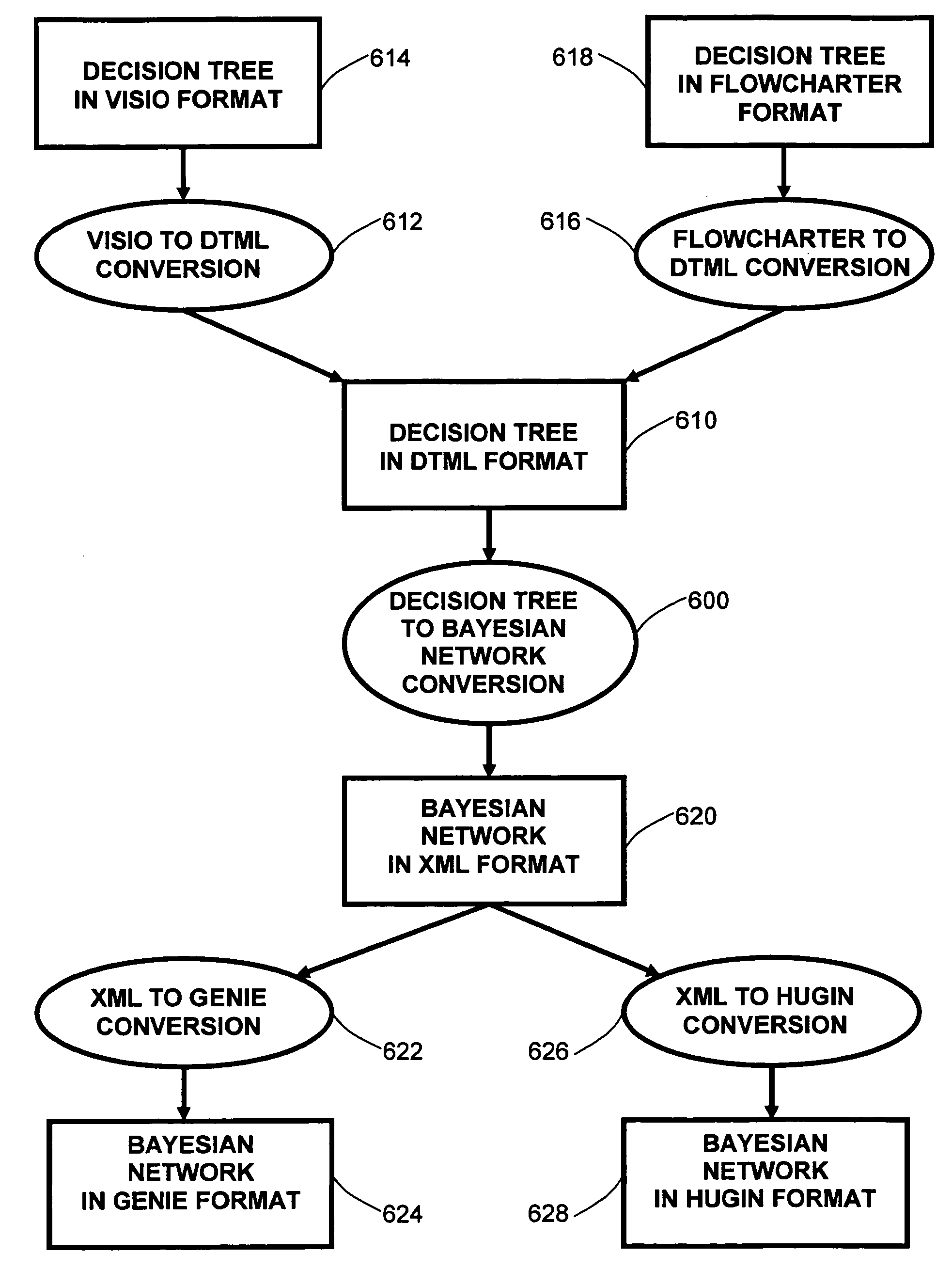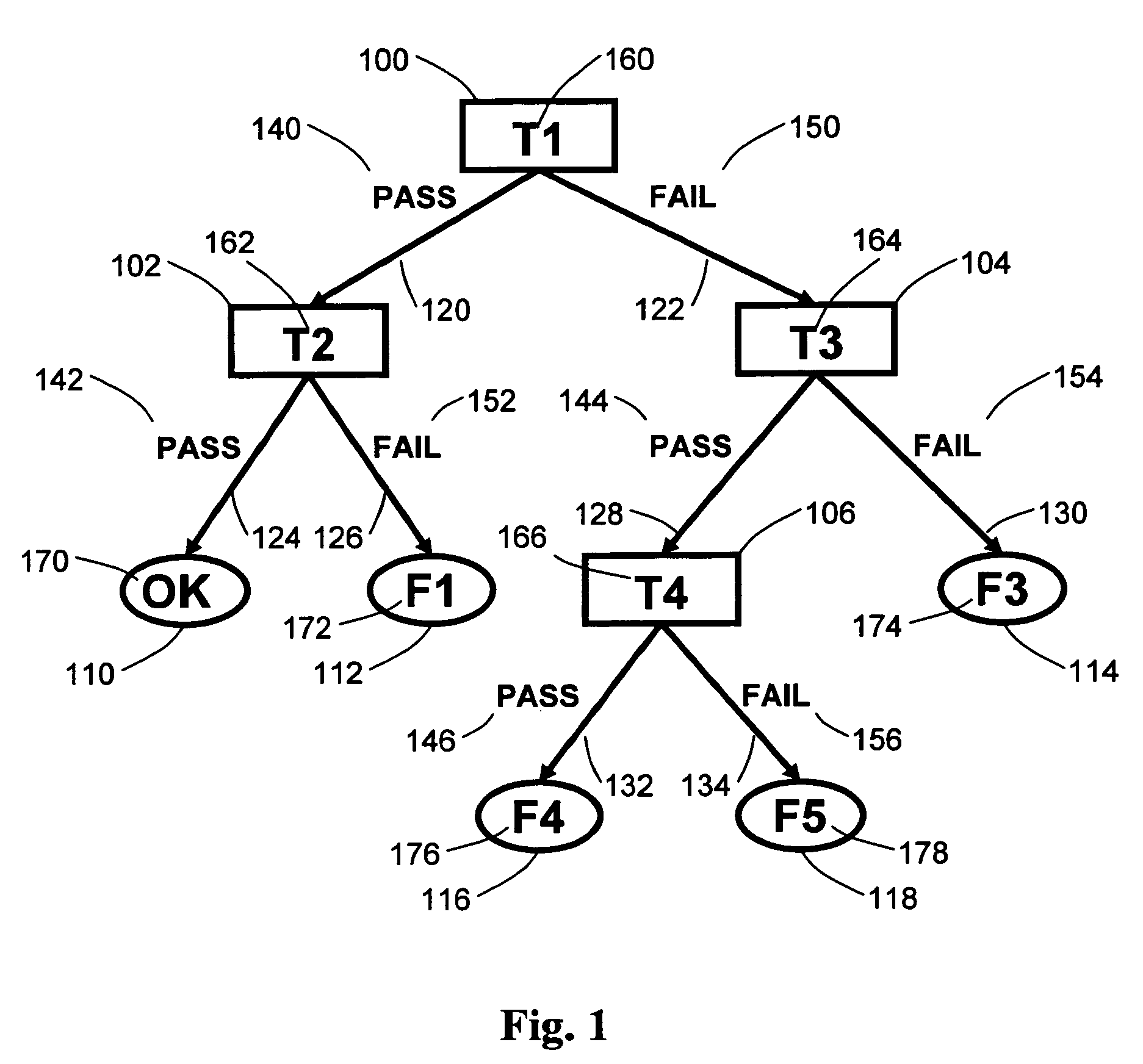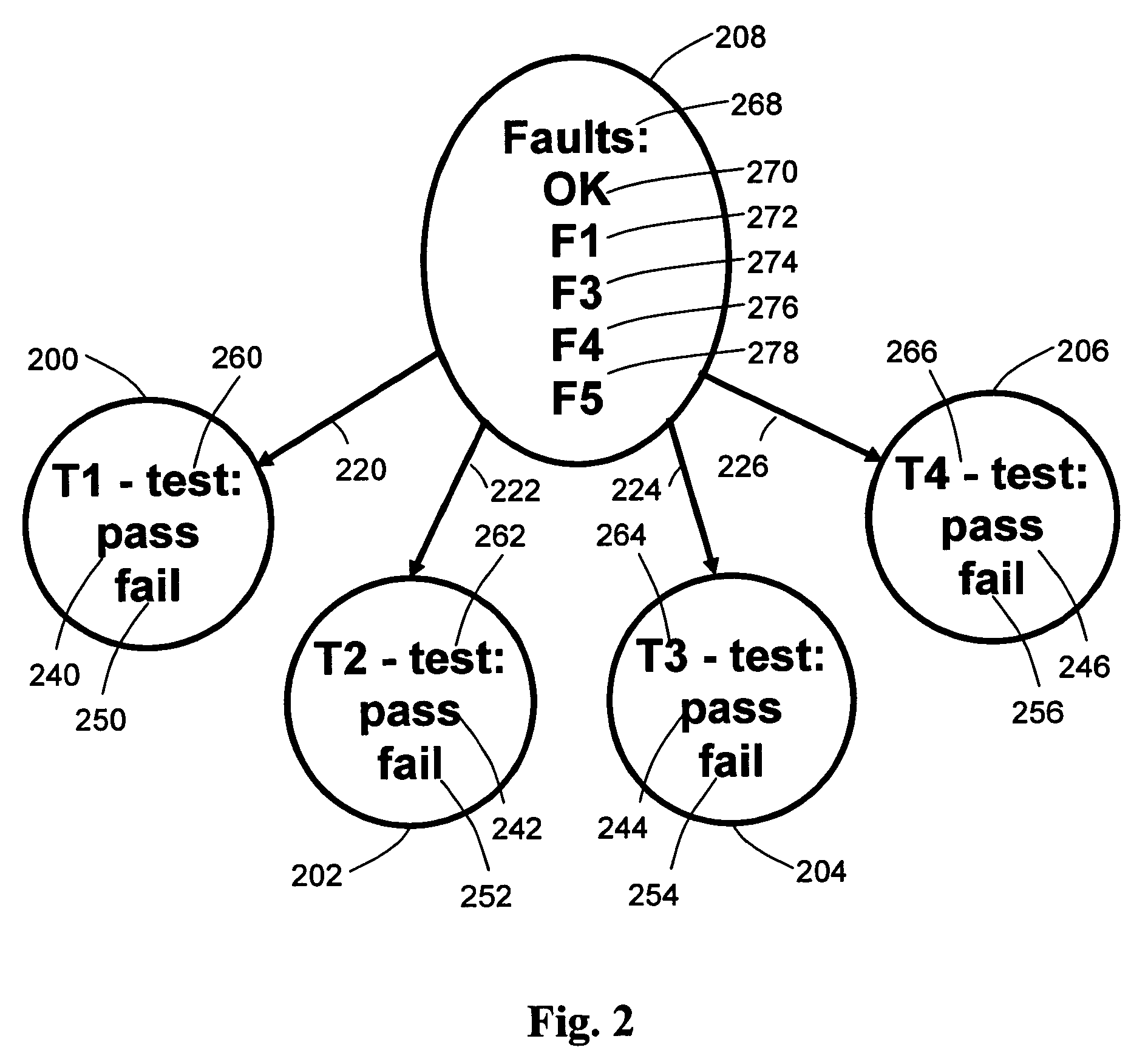Generation of decision trees by means of a probabilistic model
- Summary
- Abstract
- Description
- Claims
- Application Information
AI Technical Summary
Benefits of technology
Problems solved by technology
Method used
Image
Examples
Embodiment Construction
[0023]FIG. 1 shows an example of a simple decision tree. It includes four nodes: root node 100 and inner nodes 102, 104, 106; and five leaves 110, 112, 114, 116, 118. Node 100 has two outgoing branches 120, 122 with one branch labeled PASS 140 and one branch labeled FAIL 150. Node 102 has two outgoing branches 124, 126 with one branch labeled PASS 142 and one branch labeled FAIL 152. Node 104 has two outgoing branches 128, 130 with one branch labeled PASS 144 and one branch labeled FAIL 154. Node 106 has two outgoing branches 132, 134 with one branch labeled PASS 146 and one branch labeled FAIL 156. Note that FIG. 1 shows a simple decision tree for illustrative purposes. In practice, decision trees are generally much larger, often have more than two outgoing branches per node, and the number of branches per node may also vary within a tree.
[0024]Node 100 of the decision tree of FIG. 1 represents test T1160. Node 102 represents test T2162. Node 104 represents test T3164. Node 106 rep...
PUM
 Login to View More
Login to View More Abstract
Description
Claims
Application Information
 Login to View More
Login to View More - R&D
- Intellectual Property
- Life Sciences
- Materials
- Tech Scout
- Unparalleled Data Quality
- Higher Quality Content
- 60% Fewer Hallucinations
Browse by: Latest US Patents, China's latest patents, Technical Efficacy Thesaurus, Application Domain, Technology Topic, Popular Technical Reports.
© 2025 PatSnap. All rights reserved.Legal|Privacy policy|Modern Slavery Act Transparency Statement|Sitemap|About US| Contact US: help@patsnap.com



